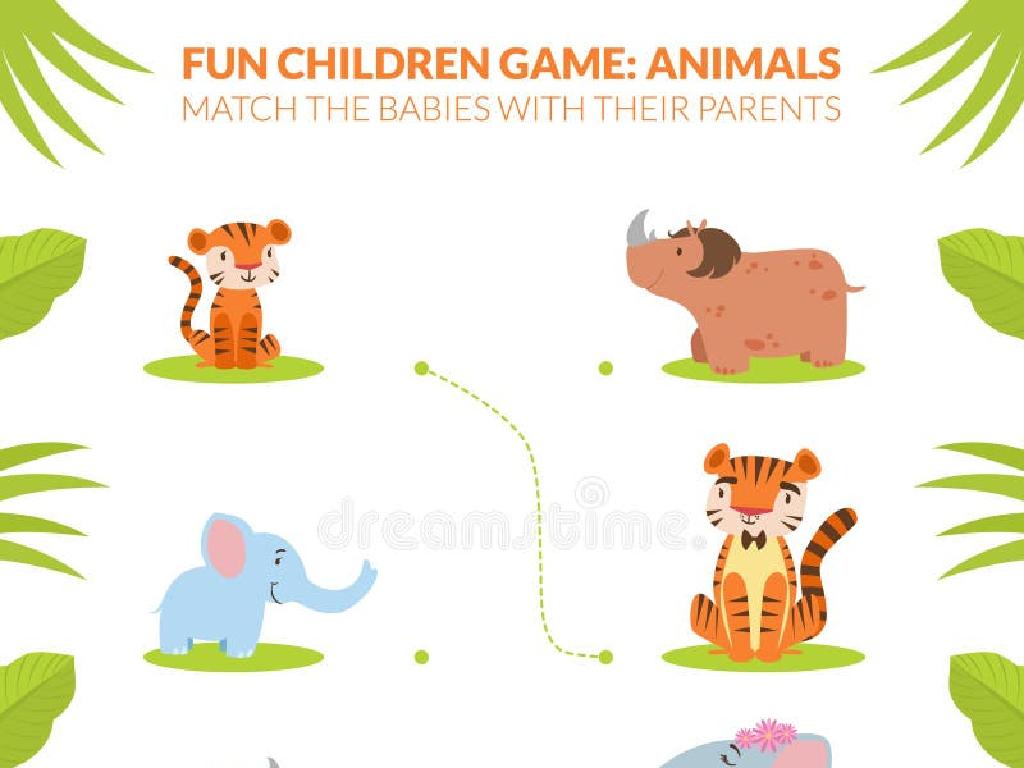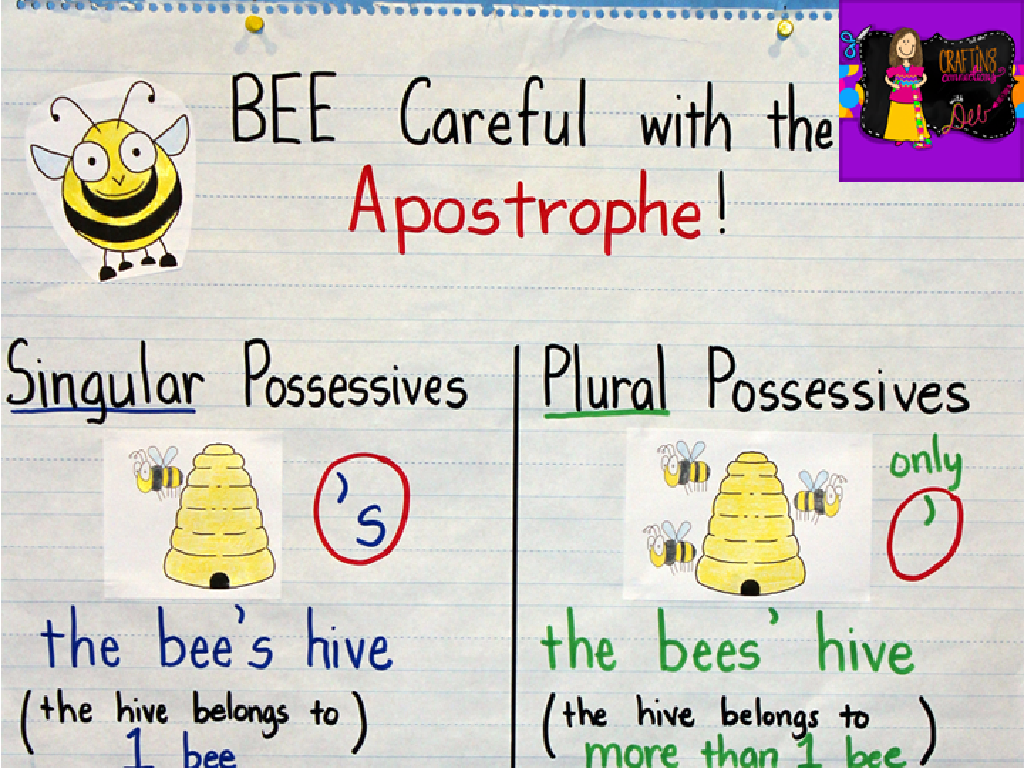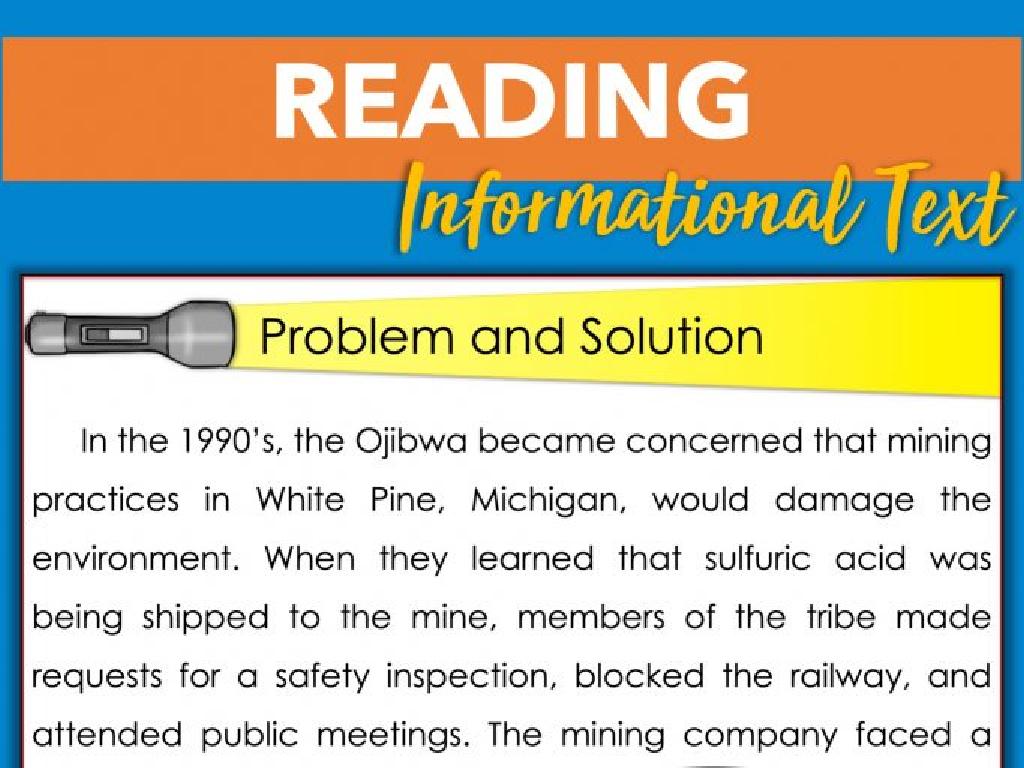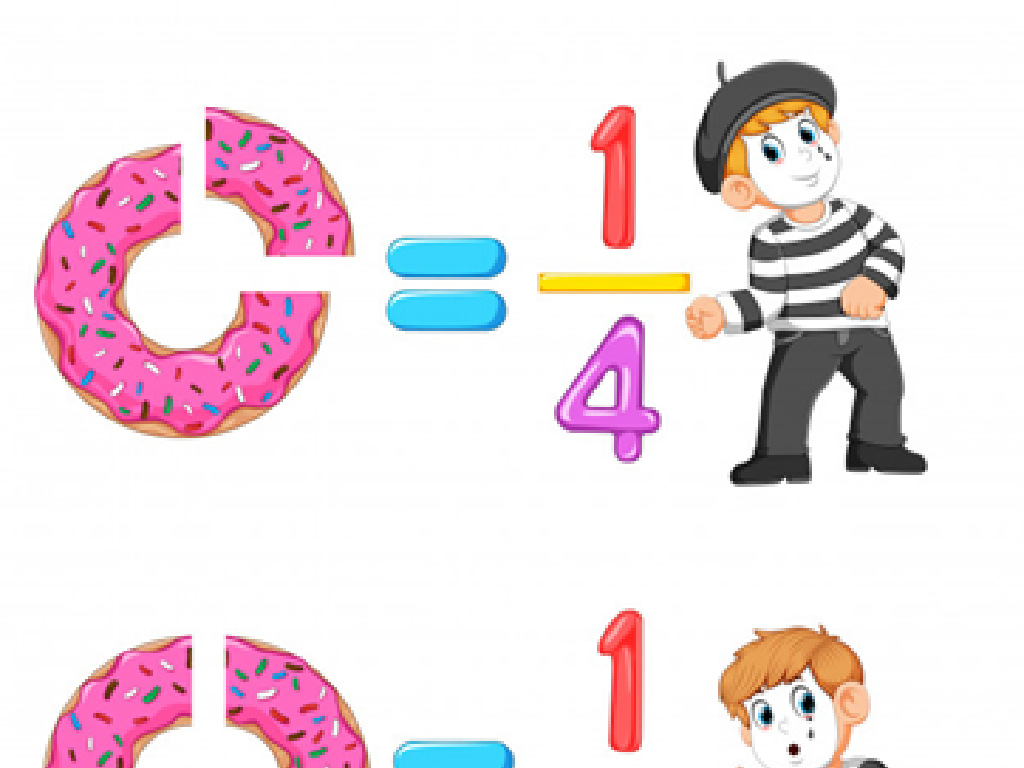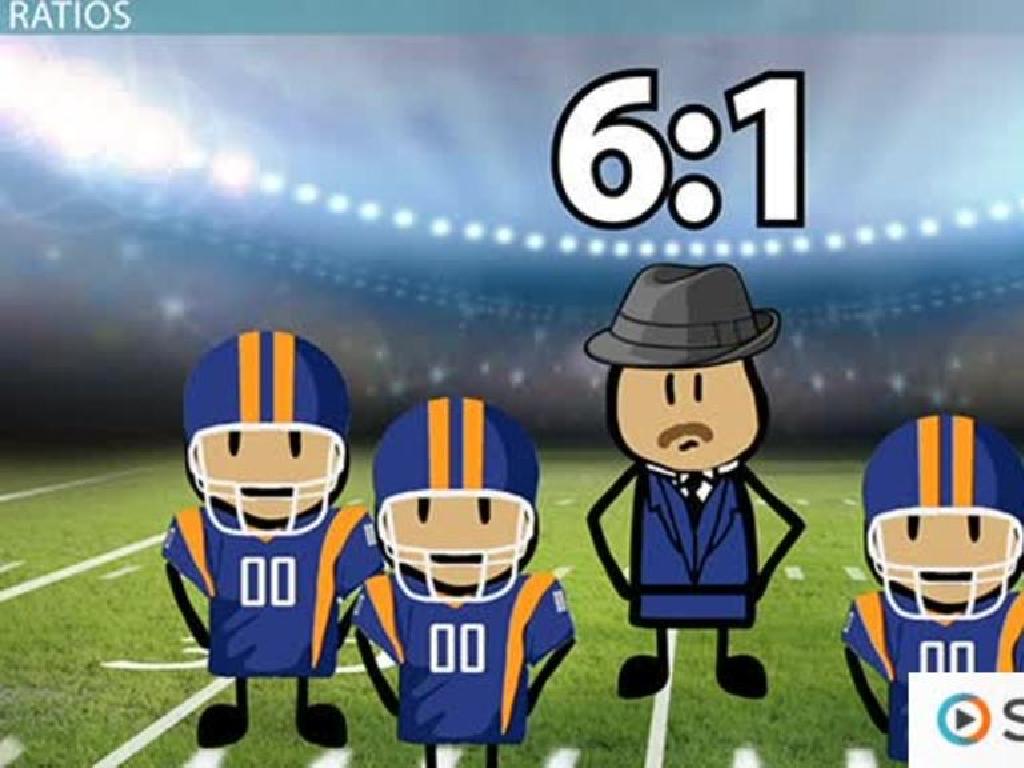Identify Shortage And Surplus With Data
Subject: Social studies
Grade: Fourth grade
Topic: Supply And Demand
Please LOG IN to download the presentation. Access is available to registered users only.
View More Content
Understanding Supply and Demand
– Basics of buying and selling
– Supply and demand explained
– Supply is how much of something is available, demand is how much it’s wanted
– Their impact on store inventory
– If demand is higher than supply, we see empty shelves. If supply is higher, we see full shelves!
– Recognizing shortage and surplus
– Shortage means not enough of an item; surplus means too much
|
This slide introduces the fundamental concepts of supply and demand, which are crucial for understanding how markets work. Begin by explaining the basic idea of buying and selling, where money is exchanged for goods or services. Then, define supply and demand, emphasizing that supply is the amount of something that is available for purchase, while demand is how much people want to buy. Discuss how these two factors determine the availability of products in stores, leading to either a shortage (when demand exceeds supply) or a surplus (when supply exceeds demand). Use relatable examples, such as a popular toy being sold out during the holidays (shortage) or a surplus of pencils in a store during back-to-school sales. Encourage students to think of examples and share their experiences with shortages or surpluses in everyday life.
Understanding Shortage in Supply and Demand
– Shortage: Demand exceeds supply
– When people want more of something than is available
– Real-life shortage examples
– Toy crazes during holidays, or empty shelves before a storm
– Shortage effects on prices
– Prices may rise if a product is scarce and highly wanted
– Recognizing shortages with data
|
This slide introduces the concept of a shortage within the context of supply and demand. A shortage occurs when the demand for a product or service is greater than the supply available. Use relatable examples such as popular toys during the holiday season becoming scarce or grocery stores running out of supplies before a storm to illustrate the concept. Discuss how shortages can lead to increased prices as people are willing to pay more to obtain the item that is in short supply. Encourage students to think of times when they wanted something that was not available and relate that to the concept of shortage. Show them how to identify shortages by looking at data, such as a graph showing a higher demand than the available supply.
Understanding Surplus in Supply and Demand
– Surplus: Supply exceeds demand
– Surplus examples in stores
– Toys left on shelves after holidays
– Surplus effects on prices
– Prices may drop to sell extra items
– Recognizing surplus data
– Use charts/graphs to spot surplus
|
This slide aims to explain the concept of surplus to fourth-grade students. A surplus occurs when there is more of a product available than what people want to buy. Use relatable examples such as toys that remain unsold after Christmas to illustrate surplus in stores. Discuss how a surplus might lead to lower prices because stores want to sell the extra items. Show students how to identify surplus by looking at simple data representations like charts or graphs, where the supply line is above the demand line. Encourage them to think of times when they’ve seen items on sale and connect it to the idea of surplus.
Understanding Supply and Demand
– Learn to read graphs and charts
– Find shortage and surplus points
– Shortage is below demand line, surplus above it
– Explore the supply and demand curve
– The curve shows how much product is made versus wanted
– Discover effects of curve points
– High point: surplus, low point: shortage
|
This slide aims to help students understand the basics of supply and demand through visual aids like graphs and charts. Students will learn to identify where a shortage or surplus occurs on a graph by looking at the points in relation to the demand line. They will explore how the supply and demand curve illustrates the relationship between the quantity of goods supplied by producers and the quantity demanded by consumers. Discuss what happens at different points on the curve, such as how a high point indicates a surplus of goods, and a low point indicates a shortage. Use examples like a lemonade stand to make the concept relatable: if you make 30 cups of lemonade but only 20 are bought, you have a surplus of 10 cups. If you make 20 cups and 30 are wanted, you have a shortage of 10 cups.
Real-World Scenarios: Shortage & Surplus
– Scenario 1: The Popular Toy
– A new toy is released, but stores quickly run out due to high demand.
– Scenario 2: The Bumper Crop of Apples
– Farmers harvest more apples than they can sell, leading to excess.
– Understanding shortage through toys
– Understanding surplus with apples
|
In this slide, we present two relatable scenarios to help students grasp the concepts of shortage and surplus. Scenario 1 illustrates a shortage by describing a situation where a newly released toy becomes so popular that stores cannot keep it in stock. This demonstrates how high demand and limited supply lead to a shortage. Scenario 2 shows a surplus through a bumper crop of apples where farmers harvest more apples than they can sell, resulting in excess apples. Discuss how each scenario affects consumers and producers, and relate it to the concepts of supply and demand. Encourage students to think of other examples of shortage and surplus they may have encountered or heard about in their daily lives.
Class Activity: Supply and Demand Game
– Split into groups for market simulation
– Experience shortage or surplus
– Some groups will have too few goods (shortage), others too many (surplus)
– Discuss feelings and strategies
– Reflect on supply and demand effects
– Think about how supply and demand affected your game decisions
|
This interactive class activity is designed to help students understand the concepts of shortage and surplus in a simulated market environment. Divide the class into small groups, and assign each group the role of either buyers or sellers. Some seller groups will have limited items to sell (creating a shortage), while others will have too many items (creating a surplus). Allow the students to simulate buying and selling, then come together to discuss their experiences. Encourage them to talk about how they felt during the activity and what strategies they used to cope with their situation. This will help them grasp how supply and demand can impact market conditions. Possible variations of the activity could include changing prices due to supply/demand changes, negotiating deals, or introducing unexpected market events.
Conclusion: Shortage, Surplus, and Everyday Life
– Review: What’s a shortage?
– When demand is greater than supply, like when a new toy is released.
– Review: What’s a surplus?
– When supply exceeds demand, like too many apples at the store.
– Applying knowledge to life
– Share your learnings
|
As we wrap up today’s lesson, let’s revisit the key concepts of shortage and surplus. A shortage occurs when there aren’t enough goods for the people who want to buy them, like when a new video game comes out and everyone wants it, but there aren’t enough copies. A surplus is the opposite; it’s when there’s more of something than people want to buy, like if a store orders too many Halloween costumes and still has them in December. Understanding these concepts helps us make better choices as consumers and citizens. Now, let’s hear what you’ve learned today. Can you think of examples of shortage and surplus from your own experiences? This reflection will help solidify your understanding and remember the concepts we’ve discussed.

